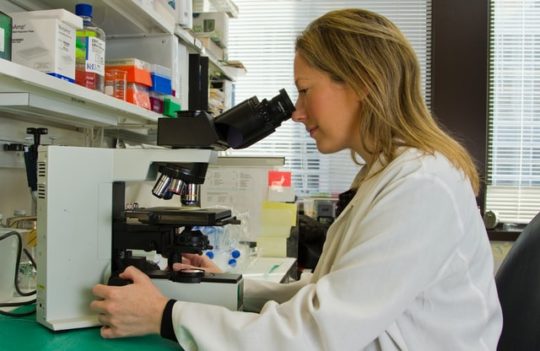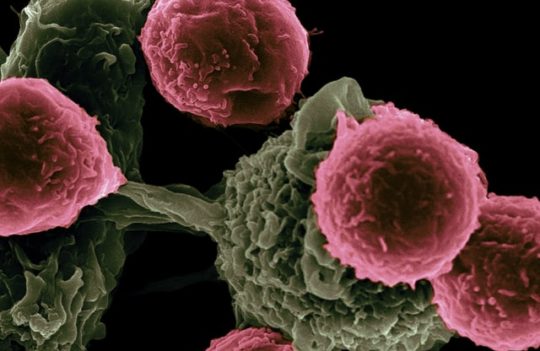 Antibody-drug conjugates
Antibody-drug conjugates
Assessing the pharmacokinetics of antibody-drug conjugates (ADCs)
Pharmacokinetics (PK) and pharmacodynamics (PD) are two interdependent properties of ADCs. Together, they dictate the clinical outcomes of ADC therapies. For this reason, their thorough analysis during preclinical development (animal studies) is of utmost importance. In this article, we will discuss present technical challenges in PK analysis as well as outline the major steps in this process.
Challenges in pharmacokinetic analysis of ADCs
Even though great progress has been made in the treatment of cancer, most major therapeutics have limited curative rates due to acquired multidrug resistance, insufficient target specificity, or high systemic toxicities. To overcome these issues, antibody-drug conjugates (ADCs) emerged as an alternative treatment prized for their specificity and enhanced safety.
These revolutionizing drugs are known to engage with cancer cells via internalizing or non-internalizing mechanisms. The former is thought to be the major mechanism of action and it relies on the internalization of the entire ADC complex upon target binding. Upon internalization, the complex is transported in endosomes that subsequently mature and fuse with lysosomes, where the degradation of the ADC molecule and release of the cytotoxic agent takes place. Alternatively, cleavable ADCs can release their payloads in the extracellular environment in response to specific chemical signals or enzymes. These ADCs are known to kill cancer cells devoid of the target (bystander effect) and, thus, deemed more effective when engaging with solid tumors or cells with significant mutations on their membrane-bound receptors (acquired resistance).
Several key properties contribute to the overall efficacy of ADC therapies including drug-to-antibody ratio (DAR), drug load distribution, unconjugated drug, charge variants, post-translational modifications, binding affinity, antibody internalization, and trafficking. All these properties heavily influence the pharmacokinetic (PK) and pharmacodynamic (PD) profile. In turn, PK profiles are heavily influenced by the antibody carrier, which accounts for most of the molecular weight of ADC molecules (~98%). However, it is not possible to estimate the PK properties of an ADC based on the antibody carrier alone due to the heterogeneity of these biomolecules.
There are two main sources of heterogeneity in ADCs are caused by:
- Manufacturing process: conjugation methods (especially those based on lysine and cysteine residues) lead to the production of a mixture of ADCs with different drug loads and distribution
- In vivo modification: off-target deconjugation due to unspecific chemical or biological mechanisms
These factors can pose challenges for ADC characterization, specifically in regards to their pharmacokinetic profile.
Bioanalytical platforms for PKPD analysis of ADCs
Pharmacokinetics is the study of the behavior and metabolism of a drug in an organism, whereas pharmacodynamics is defined as the organism’s response to a drug. PK describes how the drug is modified by the body while PD describes how the body is modified by the drug. PKPD analysis is often described as the exposure/response relationship.
PKPD are interdependent properties and the primary goal of any analysis of this type is to understand how to enhance the efficacy of a given drug while decreasing its overall toxicity. To capture PKPD profiles of ADCs and their corresponding metabolites, these molecules are administered to animal models and their plasma/serum is subsequently collected for analysis of: total and conjugated antibodies, free and conjugated drugs, and metabolites of these ADCs formed in vivo.
Three techniques are routinely used to determine these properties – ELISA, chromatography, and mass spectrometry:
- Total and conjugated antibodies: modified ELISA helps to estimate the rate of deconjugation that has taken place in vivo. This can be measured by first capturing and quantifying both free and conjugated mAbs using the target antigen or anti-human mAb (since the plasma sample originates from a non-human animal, the mAb will only capture the biotherapeutic), followed by the capture and quantification of intact ADC complexes using a specific anti-drug antibody.
- Free and conjugated drug: currently, only liquid chromatography coupled with mass spectrometry (LC-MS/MS) is sensitive and accurate enough to measure these properties of an ADC. When working with cleavable ADCs, conjugated drugs can be quantified by isolating ADCs from plasma using conventional purification methods (e.g., protein A, protein G, etc.), digesting the linker in vitro, precipitating the protein components of the sample, and finally quantifying the free drugs by LC-MS/MS. In contrast, the quantification of free drug entails the precipitation of proteins directly from the plasma sample followed by advanced purification processes and LC-MS/MS analysis.
- ADC metabolites: antibodies are typically eliminated by proteolytic degradation in cells rendering inert products. In contrast, due to the presence of the payload, the catabolic products of ADCs may retain cytotoxic activity. For this reason, the thorough investigation of these metabolites is of high importance from a safety point of view. Most methodologies developed for this purpose are, in fact, multi-step platforms involving several techniques including ligand-binding assays (LBA) for enrichment, proteolytic digestion, chromatographic separation, and mass spectrometry for characterization. Given the complexity of these methodologies, it is important to optimize the efficiency of these several steps, especially the enrichment and proteolytic degradation steps.
Methods based on ELISA are the easiest to implement and scale (high throughput). Additionally, they do not require expensive equipment or infrastructure making them desirable for screening PKPD profiles in several ADC molecules. However, these methods are insensitive to biotransformation, drug load, distribution, and DAR. Moreover, they do not provide structural information regarding the ADC molecule and its corresponding analytes.
In contrast, LC-MS/MS assays achieve higher sensitivity and specificity. Additionally, they measure drug load, DAR, and provide structural information regarding ADC metabolites. The most significant downside of these techniques is the relatively high equipment and structural cost (setup, operation, and maintenance).
The most important property to consider when developing these platforms is ADC heterogenicity. One batch of ADCs is composed of multiple ADC species with different charges, drug loads, and distribution. Each of these species undergoes a unique transformation pathway resulting in a plethora of metabolites with distinct cytotoxic potencies. Despite the complexity of the analysis, understanding the transformation pathways of ADCs is important from a safety point of view.
In contrast, PD analysis is specific for each type of disease. It involves the study of physiological responses during treatment (e.g., using non-invasive techniques such as Flow Cytometry) and post-treatment (e.g., immunohistochemistry, ELISA, etc.). PD analysis helps to correlate a specific dosage and dose regimen with a clinical outcome. Together with PK analysis, these studies help predict the behavior of a drug in the human organism.
Importance of PKPD analysis for ADC development
Understanding the pharmacokinetics and pharmacodynamics of ADCs can help determine the exposure-response relationship, optimal dose usage and regimen, predicting human PK, enhancing treatment efficacy, and safety. However, the study of PK of complex and heterogeneous ADCs is not without its challenges.
One of the most significant challenges in this type of study is the co-existence of different ADC species with different charges, drug loads, and drug molecule distribution. Each of these species undergoes different transformation pathways and has significantly different efficacies. Keeping track of the fate of all variants is complex and requires considerable effort.
One of the strategies already in place to reduce ADC heterogeneity is the use of site-specific conjugation chemistry. Unlike cysteine or lysine-based conjugation, site-specific conjugation significantly narrows the number of ADC species. As a consequence, it also renders PKPD characterization more straightforward.
- Lin, K. and Tibbitts, J. et al. Pharmacokinetic considerations for antibody drug conjugates. Pharm Res. 2012; 29(9):2354-2366. doi: 10.1007/s11095-012-0800-y
- Mou, S. et al. ADME Considerations and Bioanalytical Strategies for Pharmacokinetic Assessments of Antibody-Drug Conjugates. Antibodies (Basel). 2018; 7(4): 41. doi: 10.3390/antib7040041




